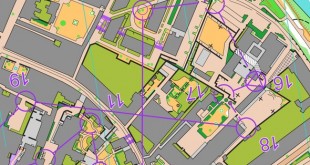 Read on to see a full analysis of who was running together on yesterdays long distance in the World Cup finals in France. There has been lots of talking about this matter at discussion groups on the internet and elsewhere – both before and after the competition – and the general feeling is that almost everybody had lots of company in the french forests. Holger Hott Johansen, for example, writes the following on his personal homepage:
Read on to see a full analysis of who was running together on yesterdays long distance in the World Cup finals in France. There has been lots of talking about this matter at discussion groups on the internet and elsewhere – both before and after the competition – and the general feeling is that almost everybody had lots of company in the french forests. Holger Hott Johansen, for example, writes the following on his personal homepage:
“[…] on the other hand I am really dissapointed to see how some of the best runners in the world behave when they meet other runners in the forest. They are not even just breaking the rules by following, but they are showing a great lack of respect for their fellow competitors. Long distance orienteering is nowadays too much about meeting the right people in the forest than finding your own route. The runners and IOF has to do something to stop this sad development. It looks like runners forget everything about rules and moral when they see an easy way to better results. Just imagine how this will turn, if we manage to bring money in to the sport.”
However, it is not as bad as one could think – just look at the analysis below! Actually, the two worst cases are the ones which everybody noticed when following the race, the Guerogiou-Novikov-Lakanen group (gold, silver, bronze in the mens class) and the Niggli-Kauppi group (gold, silver in the womens class). In addition, there is the Kvaal-Losman-Schneider group – but they ended outside the top 10, the Höjsgaard-Brozkova group (just within the top 10 for Brozkova) and the Gemperle-Müller group (also outside the top-10 – number 11 and 14).
(Photo: Copyright F.F.C.O./WorldCup2006-S.RUFFIO)
It is surprising how there has not been that much group-building among the other runners – not at all like in Japan in WOC 2005. Of course there are some groups, but it is not that bad. Below I have made a screenshot of all groups I could find. You can either look at my screenshots, or explore yourself with the new Splitsbrowser file I have made which now also includes starting times, making it possible to do the analysis yourself (Choose “Graph, Absolute” time in the left corner and click the ones you want to view. To see who may have seen each other, press “Crossing runners”). And guess what? One runner starting in the middle of the pack got through the race without being passed by anybody or passing anybody!
Analysis of the groups of runners: Mens class
- Group 1: Gueorgiou catches Novikov at the 4th control and Lakanen in the butterflies. Hott-Johansen is caught at the 4th control, but they get rid of him on the way to the 6th control.
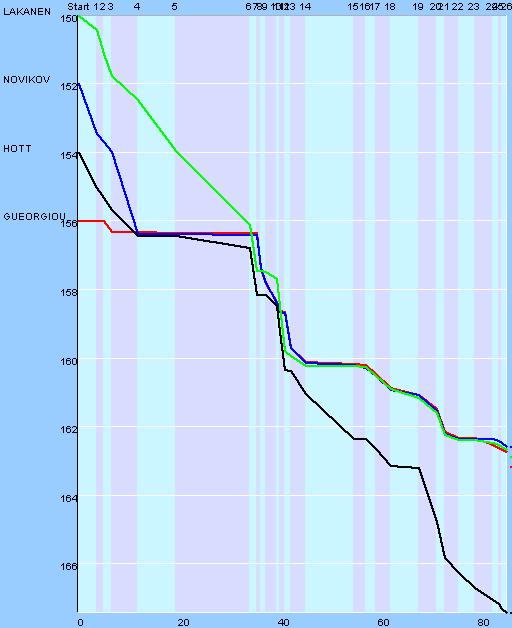
- Group 2: This is not actually much of a group, but Smola, Huovila and Nordberg get together in the final 15 minutes of the course – after some of them making errors at the 19th control.
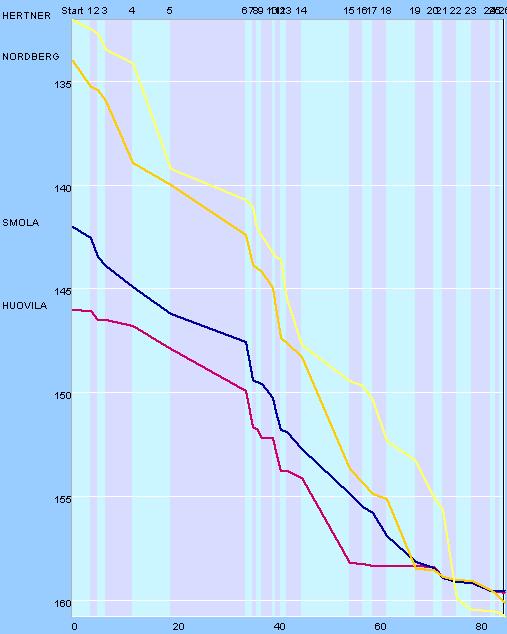
- Group 3: Again only together for the last 25 minutes or so. This time Weltzien, Jonasson and Ikonen.
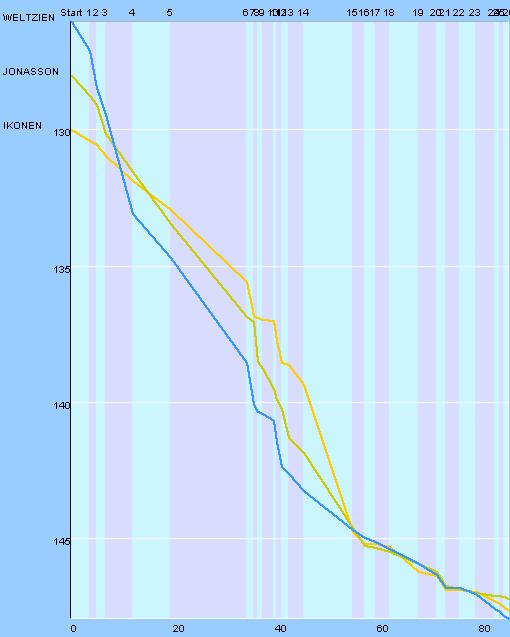
- Group 4: This is not actually a group at all. The runners cross each other, and Duncan and Gristwood – both in the GB team – are together in the butterflies.
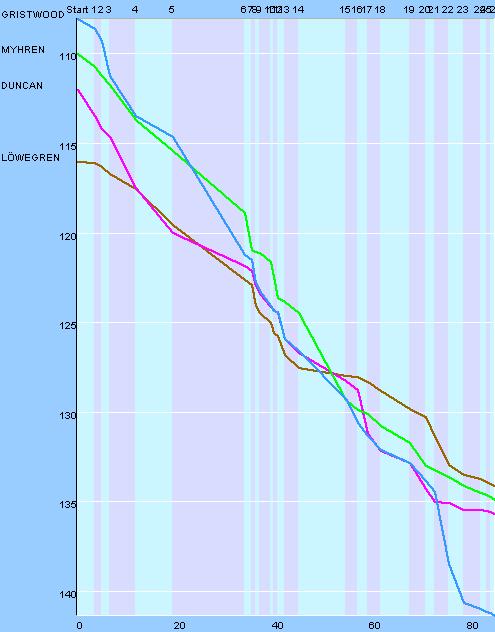
- Group 5/6: This is the only really big group – although the runners split into two separate groups in the end. The best of these is Öberg, who got an early lead. Note that these are not actually running together – there is 30-60 seconds between many of the runners for a lot of the time.
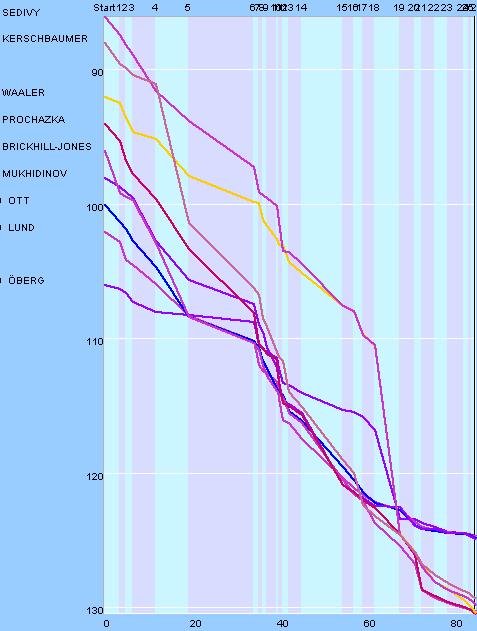
- Group 7: Again, the only real grouping is for the last 20 minutes or so.
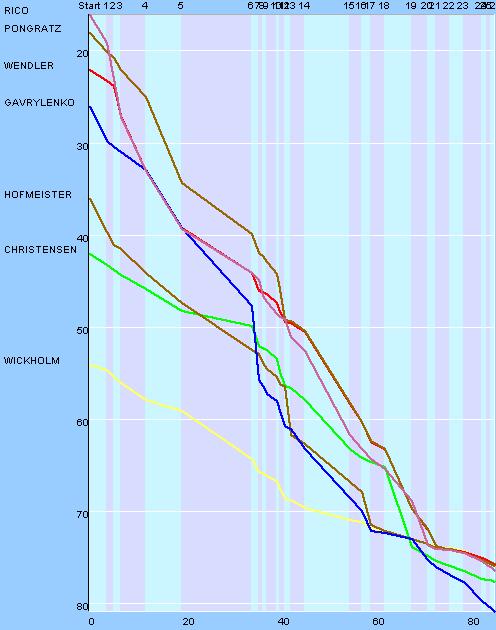
- Group 8: This is a real group of runners. Kvaal, Losman and Schneider are together through most of the course – Uschkvarok coming by for a few controls.
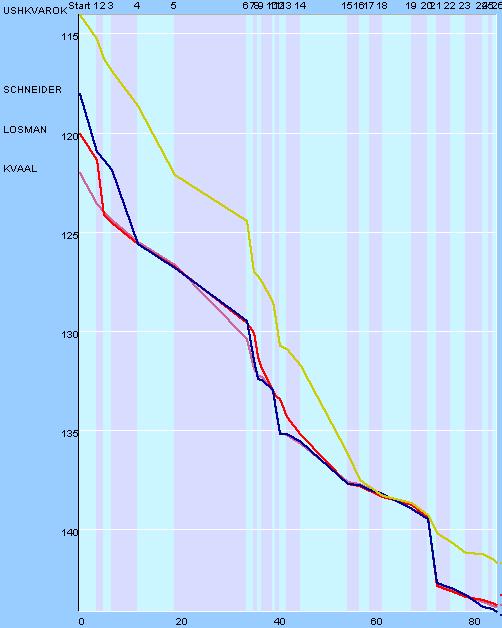
- Group 9: Again – we cannot call this a group – Adamski did most of his could run completely by himself.
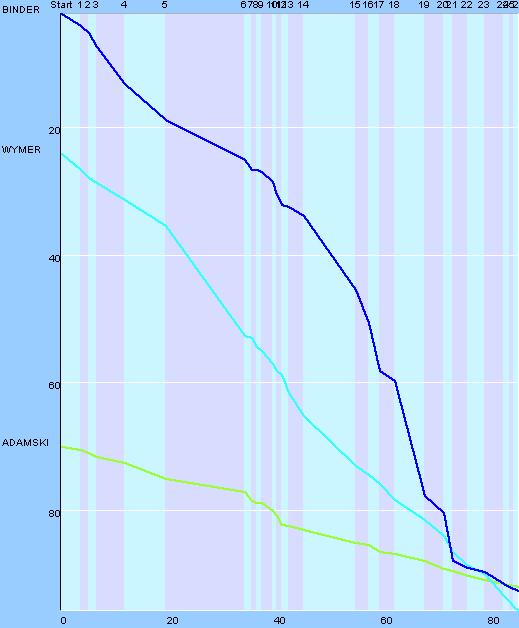
- Group 10: Wow! A man running alone without crossing anyone in the forest! That is impressive indeed!
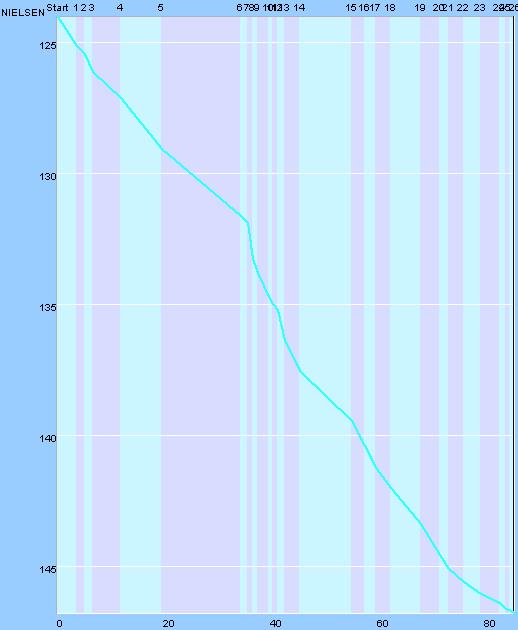
- Group 11: For the two last men starting – Wingstedt and Hubmann – it was a lonely, long and probably also painful tour in the bush. Luckily they found each other after Wingstedts 20 minute error on the 19th control….
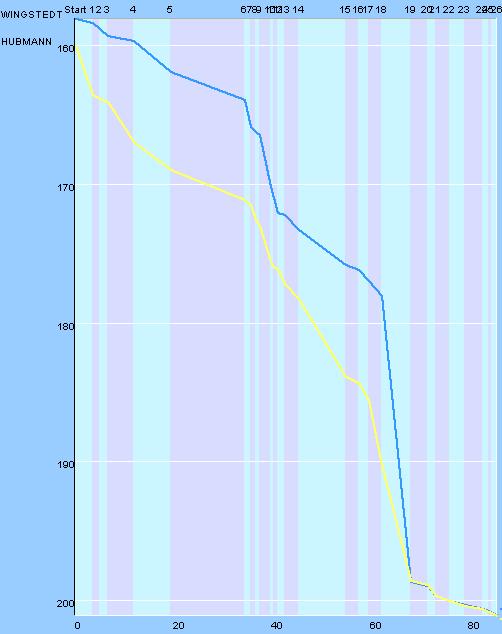
Analysis of the groups of runnerss: Womens class
- Group 1: Luder-Kauppi. These two runners run together for large parts of the course. They passed Jukkola and Andersen – but none of these two joined the group.

- Group 2: Müller and Gemperle – the two Swiss girls – joined forces before the butterflies, and stayed together for the rest of the course. It is actually kind of strange that two runners from one nation can not start after another, but there can be four minutes between them – in which case they both get the same butterflies…
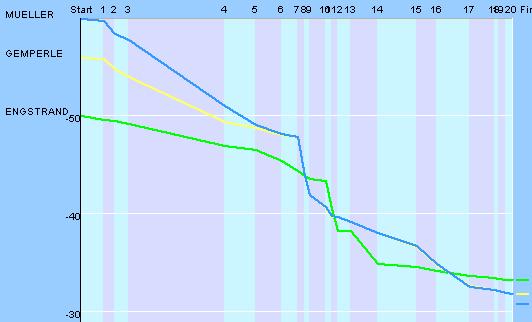
- Group 3: Another group from the butterflies and on: Höjsgård and Brozkova.
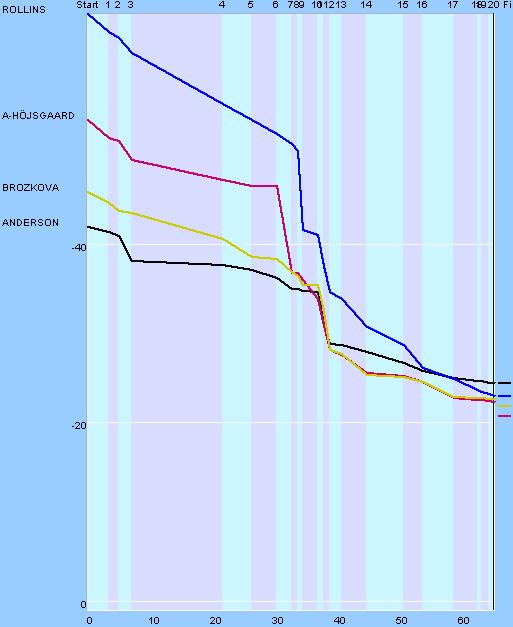
- Group 4: Actually no group at all. These runners all run their own races without seeing much to eachother.
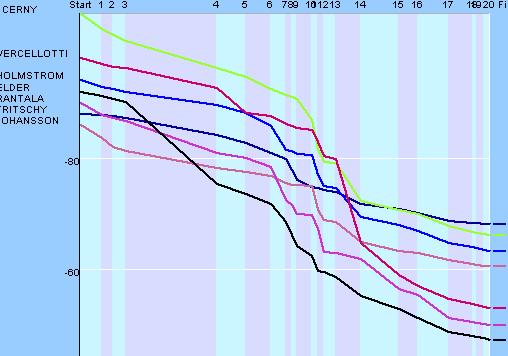
- Group 5: This is the largest grouping of runners in the womens class. However, not many runners are together for large parts of the course – the behaviour is more on-and-off.
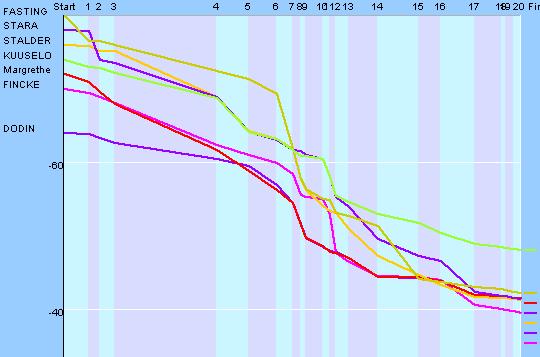
- Group 6: Again a group after the butterflies. A group of 4 runners running together for the last third of the course. None of these ended better than number 15 (Moe).
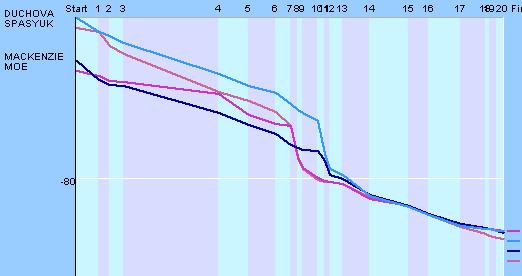
- Group 7: Some runners who again met just after the butterflies. None of these ended within the top 25.
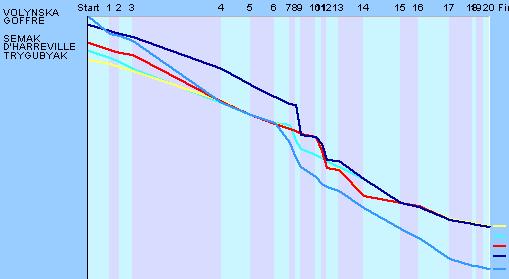
 World of O News
World of O News



